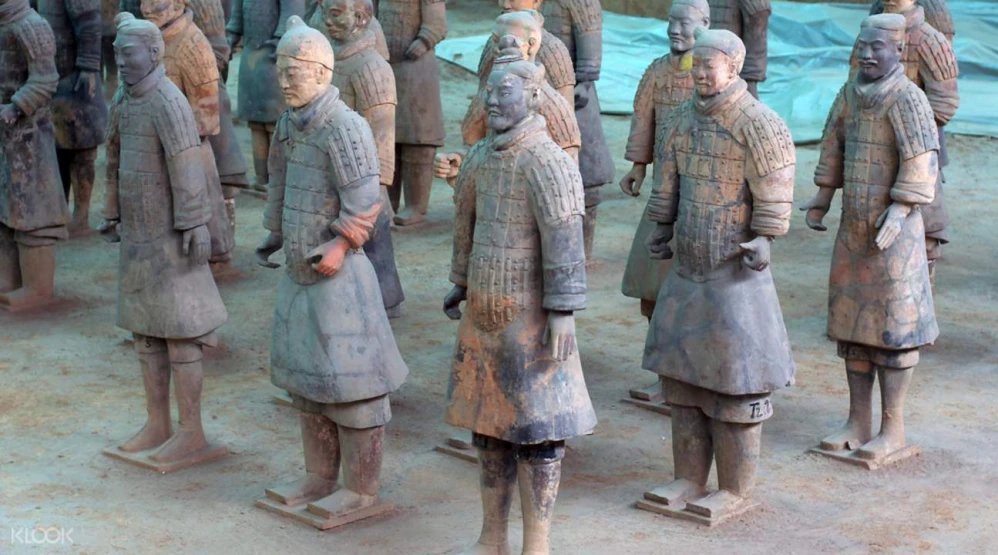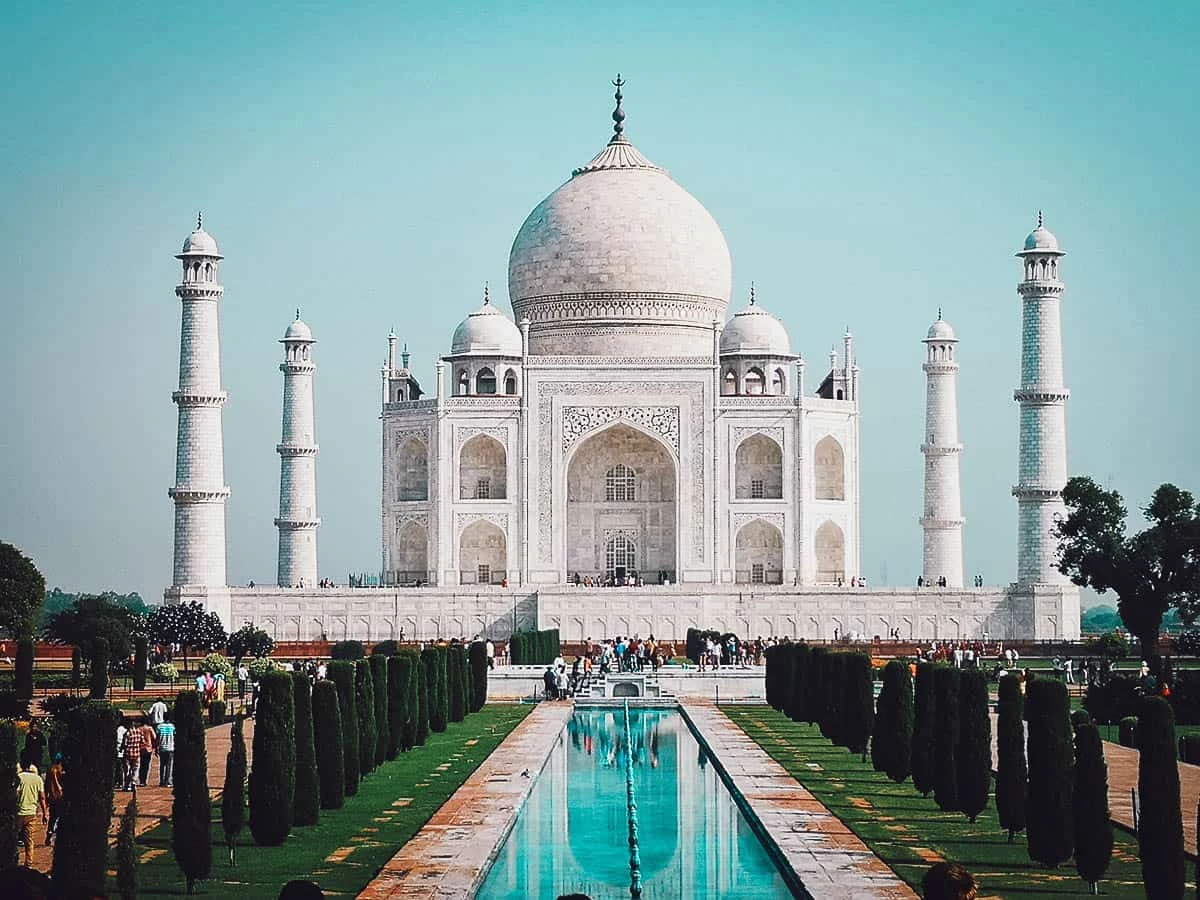
India
Region map
General information
India Reopening
From March 27, 2022, India will allow all international flights to resume. Passengers must still follow the COVID-19 entry requirements introduced by the Indian government.
Visitors with a vaccine certificate showing that they are fully vaccinated against COVID-19 can enter India without any additional restrictions.
The certificate state that the traveler received the last dose of a COVID-19 vaccine at least 15 days before arrival in India. The document must be issued by an approved country and uploaded before travel.
Visitors to India who are not fully vaccinated against COVID-19 must have proof of a negative test result instead.
The COVID-19 test must be 1 of the following:
- RT-PCR
- RT-LAMP
- CRISPR
Passengers must take the test no more than 72 hours before departure for India.
Quarantine-free Travel for Tourists in India
India has removed all quarantine requirements for foreign visitors.
International travelers do not need to quarantine on arrival in India, provided they meet the other entry restrictions mentioned above.
Even though quarantine is not mandatory, it is essential that visitors monitor their health and report any signs of contagion.
General information
When talking about India, the very first thing that comes to mind is the diversity of the place. Along with cultural diversity the natural diversity here, too, is something that is awe-inspiring. From mountain ranges to sea coasts, deserts to plateaus.
It is often said that India is not a country, but a continent. Stretching from the frozen summits of the Himalayas to the tropical greenery of Kerala, India encompass an incomparable range of landscapes, cultures and people. Travelling in India allows you to meet people of several from the world’s great faiths, encounter temple rituals performed since the time of the Egyptian Pharaohs, and see ancient buildings erected centuries before the Taj Mahal.
Visiting India is an exciting assault on the senses. Sights, sounds, smells and sensations are all experienced at maximum intensity. It can feel intimidating on day one, but eventually, the noise and chaos become an ordinary part of everyday life. The sensory stimulation becomes strangely addictive. Presided over by an extraordinary array of gods and deities, approximately one-sixth of the planet’s population can be found here, living in anything from high-rise apartments and inner-city shantytowns, to simple huts in remote villages. India is one of the world’s great melting pots, where an incredible diversity of cultures, religions and ethnicities live in unexpected harmony. Let's discover India with Adventure Asia!
India itineraries
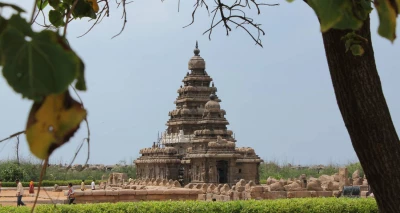
Classic South India
Discover a thousand shades of green, indulge in some of the continent’s freshest food and share moments of connection with the locals on this tour. Travel down the scenic East Coast road into the countryside and across to the west coast before finishing at India’s deep south. Experience the cultures, religions, and histories of this region through its small rural towns, fishing villages and the scented spice plantations set in the picturesque Western Ghats mountains. This revelatory trip introduces you to an area less traveled, from the comfort of a private vehicle.

Rajasthan Family Adventure
A fun-filled holiday with your family is the best time to strengthen bonds and rejuvenate the love between dear ones. And what could be a better place to have a good time with your family members than Rajasthan? The pleasant weather, beautiful scenery, and delightful food are sure to put you in your best mood to reveal the best time with your family. Visit the numerous attractions of this beautiful place in the company of your loved ones away from the routine tasks of life.
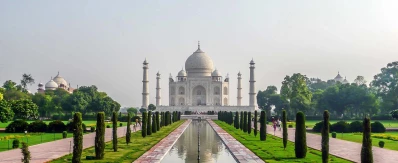
Treasures of Rajasthan
The trip takes us through a time machine a few hundreds of years back in time. We find ourselves in extremely remote tribal areas of Rajasthan where life is as primitive as primitive can be. This enables us to capture images of tribal life - in all its traditional colours and innocent hospitality. The feudal respect for the rulers has been retained over several generations. Time seems to have come to a standstill here. Our specially designed program features interesting mix of hiking, sightseeing and relaxation to allow one to experience the best that this exotic corner can offer.

North India And Nepal
A relaxing tour featuring India’s so-called Golden Triangle (Delhi-Agra-Jaipur), with a rich backdrop of fascinating culture, monumental architecture and historical splendor, in addition to a memorable sojourn at Hinduism’s most sacred city. We see some of the most compelling highlights of northern India. From here the tour traverses to Nepal and reach Lumbini. Kathmandu is the capital and bustling city having many cultural world heritages site in small area. During your tour you visit to the main highlights of landmark destination in Nepal which is Kathmandu and Chitwan.
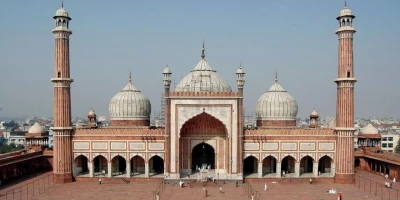
Best of Golden Triangle in 10 Days
This family-friendly itinerary is a relaxed exploration of the enchanting princely domains of Rajasthan. This trip is filled with all the buzz and excitement of the cities of Delhi, Jaipur and Agra. It is a comprehensive introduction to varied wildlife, fascinating culture and spectacular Moghul and Hindu architecture.
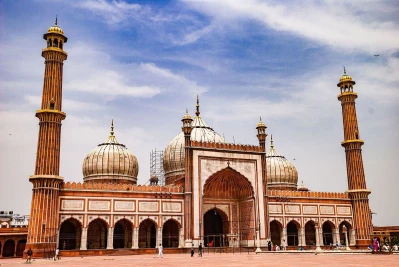
Tigers and Tajmahal
Uncover Northern India’s greatest cities on this perfect introduction to one of the world’s most fascinating and alluring destinations. Explore the teeming, colorful, spectacular cities of Delhi, Agra, and Jaipur that make up the world-famous, fascinating golden triangle. See sights like the Red Fort, the awe-inspiring Taj Mahal and the Palace of winds. Spend two nights in Ranthambhore Park, a one-time hunting ground of Indian princes, and complete your holiday with a night in a luxury jungle resort.

7 Days Golden Triangle
The Golden triangle tour, including Delhi, Agra, and Jaipur, is one of the most sought-after tours opted by a large number of tourists. If you also want to visit these three amazing cities in the country, then you should go on this tour. You will get a chance to witness the best of the culture of India. Each city will offer something unique to you.
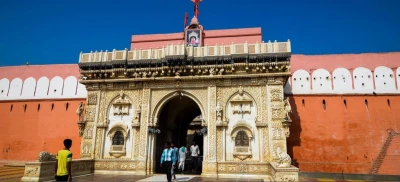
Palaces and Deserts Of Rajasthan
A land of spectacular diversity, India still manages to excite and enthrall the senses of even the hardiest traveler like few other places on earth. Join us on a journey of discovery through one of its most breathtakingly diverse landscapes, as we travel from the chaotic splendor of its bustling capital to the very edge of the Great Thar Desert. After exploring a little of the Mughal and colonial elegance of Delhi, we head west towards the timeless landscapes of the Aravlli Hills and the desert cities that lie close to the border with neighboring Pakistan. We will pass through lands that still reflect the fierce pride and majesty of the Rajput princes, staying in palaces and hunting lodges as we make our way towards the historic cities of Bikaner and Jaisalmer. We’ll follow in the footsteps of the emperors of old as we ride out by camel to camp beneath the desert sky, and in Jodhpur, the famous ‘blue city’, we’ll visit the colossal Meherangarh Fort, one of India’s most majestic architectural treasures, before finishing in the lakefront ‘white city’ of Udaipur.
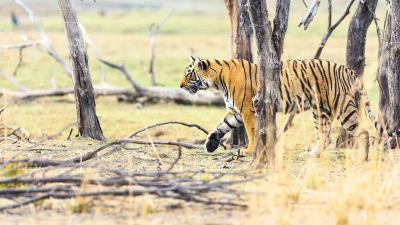
Explore Ranthambore National Park
On this remarkable tour you seek out three iconic large cats: search for tigers in Ranthambore National Park, leopards in the remote areas of southern Rajasthan and the only remaining Asiatic lions in Gir National Park, Gujarat. It offers fascinating insights into the customs of tribal, rural village life and includes a climb up the magnificently poised Jain temples in Palitana. Add to this the dramatic salt flats and the marshland of Kutch, home to the rare Indian Wild Ass.

Golden Triangle Tour
This five days golden triangle tour gives you a lifetime opportunity to explore the colors of India. This tour is perfect for those who want to take a dip into rich Indian history, culture, and traditions. A visit to the three historical cities Delhi, Agra and Jaipur will give you the most memorable moments of your life. It is a tour in which you will visit the major attractions of the golden triangle, like a visit to one of the largest Mosque Jama Masjid in Delhi. A rickshaw ride in Old Delhi will take you into another world. The mesmerizing beauty of the Taj Mahal in Agra will take your heart away and the pink city Jaipur will take you to the Rajput era.

North India And Nepal
A relaxing tour featuring India’s so-called Golden Triangle (Delhi-Agra-Jaipur), with a rich backdrop of fascinating culture, monumental architecture and historical splendor, in addition to a memorable sojourn at Hinduism’s most sacred city. We see some of the most compelling highlights of northern India. From here the tour traverses to Nepal and reach Lumbini. Kathmandu is the capital and bustling city having many cultural world heritages site in small area. During your tour you visit to the main highlights of landmark destination in Nepal which is Kathmandu and Chitwan.

Classic South India
Discover a thousand shades of green, indulge in some of the continent’s freshest food and share moments of connection with the locals on this tour. Travel down the scenic East Coast road into the countryside and across to the west coast before finishing at India’s deep south. Experience the cultures, religions, and histories of this region through its small rural towns, fishing villages and the scented spice plantations set in the picturesque Western Ghats mountains. This revelatory trip introduces you to an area less traveled, from the comfort of a private vehicle.

Rajasthan Family Adventure
A fun-filled holiday with your family is the best time to strengthen bonds and rejuvenate the love between dear ones. And what could be a better place to have a good time with your family members than Rajasthan? The pleasant weather, beautiful scenery, and delightful food are sure to put you in your best mood to reveal the best time with your family. Visit the numerous attractions of this beautiful place in the company of your loved ones away from the routine tasks of life.

North India And Nepal
A relaxing tour featuring India’s so-called Golden Triangle (Delhi-Agra-Jaipur), with a rich backdrop of fascinating culture, monumental architecture and historical splendor, in addition to a memorable sojourn at Hinduism’s most sacred city. We see some of the most compelling highlights of northern India. From here the tour traverses to Nepal and reach Lumbini. Kathmandu is the capital and bustling city having many cultural world heritages site in small area. During your tour you visit to the main highlights of landmark destination in Nepal which is Kathmandu and Chitwan.

Best of Golden Triangle in 10 Days
This family-friendly itinerary is a relaxed exploration of the enchanting princely domains of Rajasthan. This trip is filled with all the buzz and excitement of the cities of Delhi, Jaipur and Agra. It is a comprehensive introduction to varied wildlife, fascinating culture and spectacular Moghul and Hindu architecture.

Tigers and Tajmahal
Uncover Northern India’s greatest cities on this perfect introduction to one of the world’s most fascinating and alluring destinations. Explore the teeming, colorful, spectacular cities of Delhi, Agra, and Jaipur that make up the world-famous, fascinating golden triangle. See sights like the Red Fort, the awe-inspiring Taj Mahal and the Palace of winds. Spend two nights in Ranthambhore Park, a one-time hunting ground of Indian princes, and complete your holiday with a night in a luxury jungle resort.

7 Days Golden Triangle
The Golden triangle tour, including Delhi, Agra, and Jaipur, is one of the most sought-after tours opted by a large number of tourists. If you also want to visit these three amazing cities in the country, then you should go on this tour. You will get a chance to witness the best of the culture of India. Each city will offer something unique to you.

Palaces and Deserts Of Rajasthan
A land of spectacular diversity, India still manages to excite and enthrall the senses of even the hardiest traveler like few other places on earth. Join us on a journey of discovery through one of its most breathtakingly diverse landscapes, as we travel from the chaotic splendor of its bustling capital to the very edge of the Great Thar Desert. After exploring a little of the Mughal and colonial elegance of Delhi, we head west towards the timeless landscapes of the Aravlli Hills and the desert cities that lie close to the border with neighboring Pakistan. We will pass through lands that still reflect the fierce pride and majesty of the Rajput princes, staying in palaces and hunting lodges as we make our way towards the historic cities of Bikaner and Jaisalmer. We’ll follow in the footsteps of the emperors of old as we ride out by camel to camp beneath the desert sky, and in Jodhpur, the famous ‘blue city’, we’ll visit the colossal Meherangarh Fort, one of India’s most majestic architectural treasures, before finishing in the lakefront ‘white city’ of Udaipur.

Explore Ranthambore National Park
On this remarkable tour you seek out three iconic large cats: search for tigers in Ranthambore National Park, leopards in the remote areas of southern Rajasthan and the only remaining Asiatic lions in Gir National Park, Gujarat. It offers fascinating insights into the customs of tribal, rural village life and includes a climb up the magnificently poised Jain temples in Palitana. Add to this the dramatic salt flats and the marshland of Kutch, home to the rare Indian Wild Ass.

Golden Triangle Tour
This five days golden triangle tour gives you a lifetime opportunity to explore the colors of India. This tour is perfect for those who want to take a dip into rich Indian history, culture, and traditions. A visit to the three historical cities Delhi, Agra and Jaipur will give you the most memorable moments of your life. It is a tour in which you will visit the major attractions of the golden triangle, like a visit to one of the largest Mosque Jama Masjid in Delhi. A rickshaw ride in Old Delhi will take you into another world. The mesmerizing beauty of the Taj Mahal in Agra will take your heart away and the pink city Jaipur will take you to the Rajput era.

Explore The Land Of The Tiger
The land of the tiger tour is planned to take you on a tour to different regions of India and explore the natural habitat of tigers- the official national animal of India. While on the tour, explore national parks, including Kanha National park and Bandhavgarh National park. Enjoy elephant safari or jeep safari to explore the vivid flora and fauna of these wildlife tiger reserves. Another activity to enjoy is full day game viewing. In the latter leg of the journey, visit Agra for viewing the Taj Mahal. This alluring white marble monument with intricate designs in its interiors never fails to enchant a visitor.

The Lodhi
An urban oasis centrally located in New Delhi, The Lodhi is the intuitive expression of a contemporary yet stylishly confident India. We are about personal journeys and discovery for guests, created through bespoke experiences of culture, cuisine, wellness, architecture, lifestyle and personalized service.
The Lodhi
An urban oasis centrally located in New Delhi, The Lodhi is the intuitive expression of a contemporary yet stylishly confident India. We are about personal journeys and discovery for guests, created through bespoke experiences of culture, cuisine, wellness, architecture, lifestyle and personalized service.

The Imperial hotel Delhi
An oasis of calm and comfort sums up the understated luxury of this Lutyen’s masterpiece, bestowed with the prestigious title of the ‘Best Heritage Hotel’ by the Jury- Outlook Traveller Awards 2018 and also by Travel + leisure India’s Best Awards 2017.
The Imperial hotel Delhi
An oasis of calm and comfort sums up the understated luxury of this Lutyen’s masterpiece, bestowed with the prestigious title of the ‘Best Heritage Hotel’ by the Jury- Outlook Traveller Awards 2018 and also by Travel + leisure India’s Best Awards 2017.
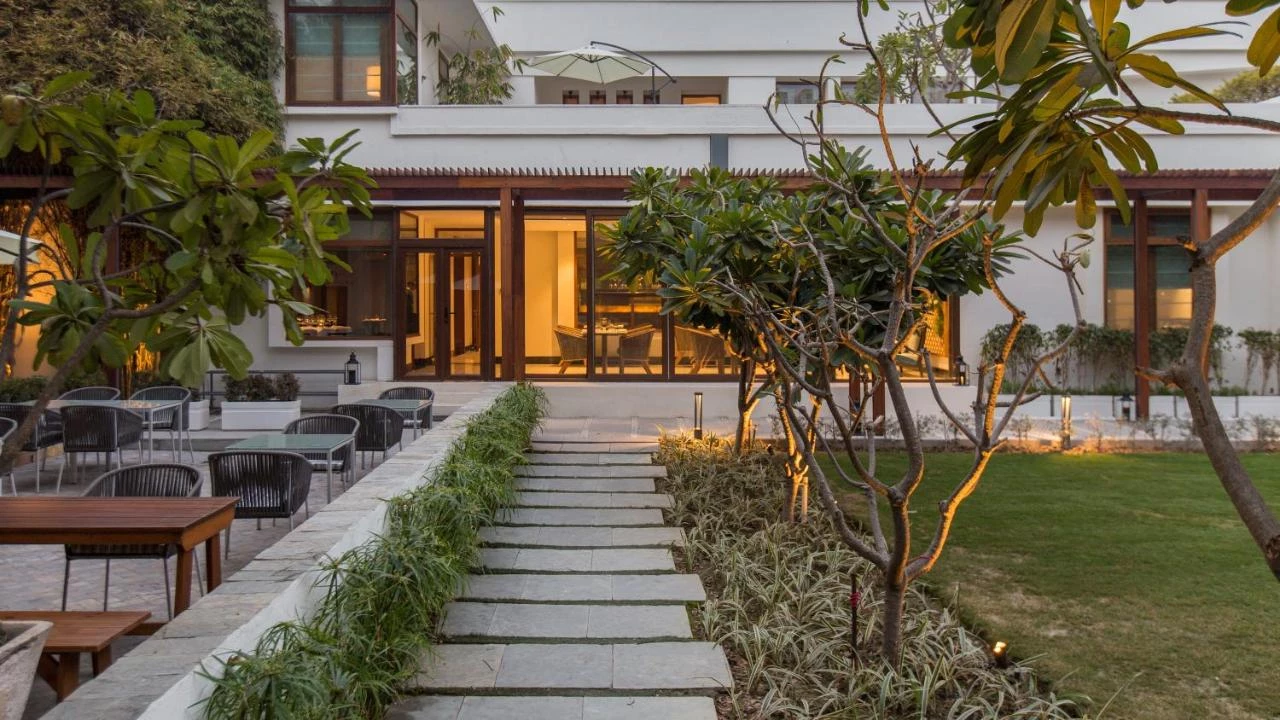
The Manor Hotel Delhi
Understated elegance meets luxury chic at The Manor. Our contemporary two-storey luxury hotel has twelve rooms to choose from, each created with its own unique style, making The Manor as individual as you are. The Manor steps up to its reputation for a blend of contemporary chic reinterpreted with local materials and craftsmanship, including authentic terrazzo, natural textures, and fabrics paired with rich wood and stones.





The Manor Hotel Delhi
Understated elegance meets luxury chic at The Manor. Our contemporary two-storey luxury hotel has twelve rooms to choose from, each created with its own unique style, making The Manor as individual as you are. The Manor steps up to its reputation for a blend of contemporary chic reinterpreted with local materials and craftsmanship, including authentic terrazzo, natural textures, and fabrics paired with rich wood and stones.

Scarlette New Delhi
Scarlette, owned by a French duo, is an ode to Indian design and textiles. It's a very stylish stay within walking distance to trendy Hauz Khas Village. Every square inch of this guest house is decorated with antique curios, many of them are available to buy at its well-stocked boutique; there’s even a tailor on hand.
Scarlette New Delhi
Scarlette, owned by a French duo, is an ode to Indian design and textiles. It's a very stylish stay within walking distance to trendy Hauz Khas Village. Every square inch of this guest house is decorated with antique curios, many of them are available to buy at its well-stocked boutique; there’s even a tailor on hand.
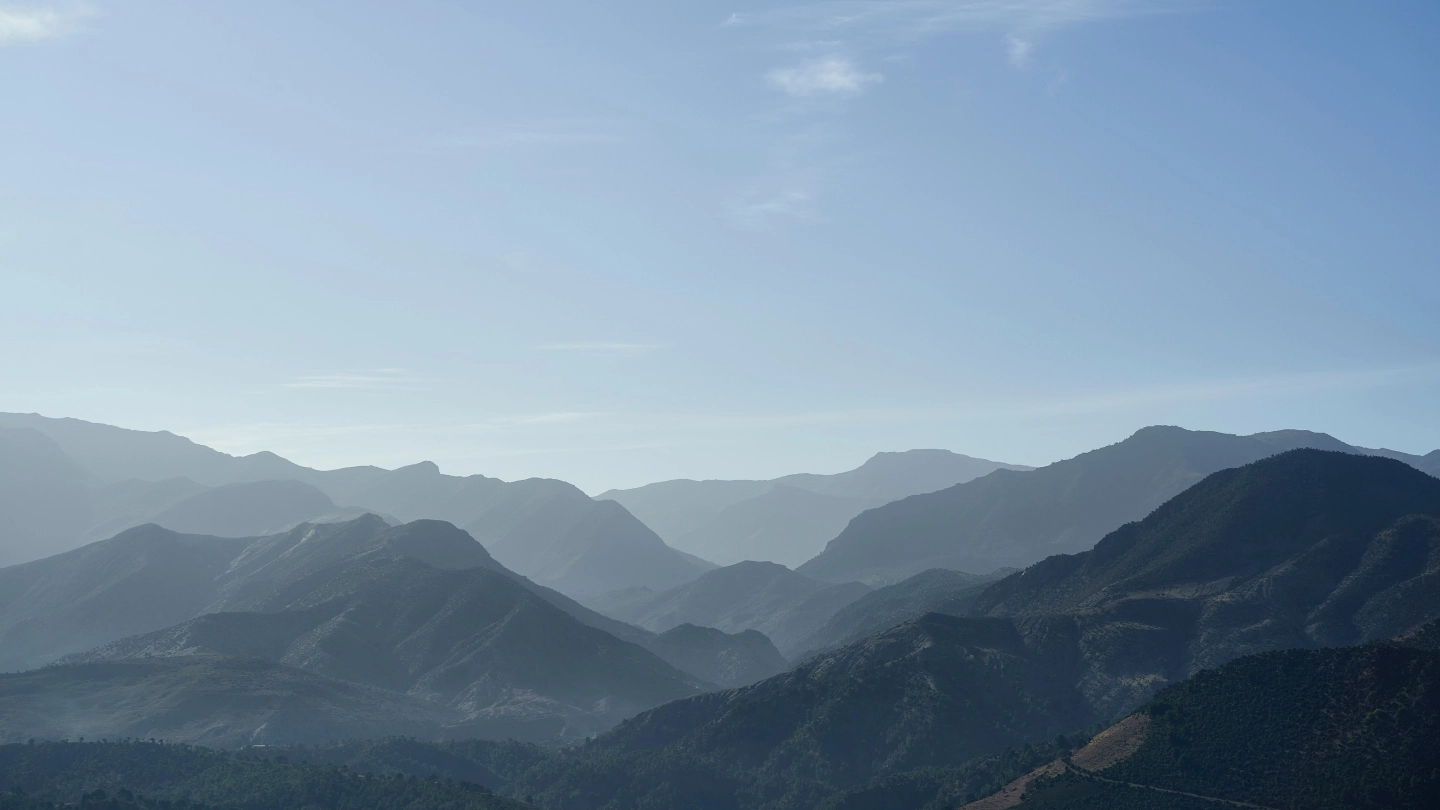
Why Adventure Asia
The company aims to serve soft/medium vacation options to the experienced adventure customer seeking uniquely styled expeditions, rather than traditional tourist-oriented itineraries that are prevalent.
Event Festival
Browse a month-by-month breakdown of suggested itineraries, seasonal activities, climate considerations and festivals.
Jan–Feb (Magha–Phalguna)
Non-religious
Hampi Utsav: Government-sponsored music and dance festival.
International Kite Festival/Uttarayan (Jan 14). Coinciding with Makar Sankranti, Ahmedabad (Gujarat) hosts the most spectacular of all of India’s kite festivals.
Republic Day (Jan 26): A military parade in Delhi typifies this state celebration of India’s republic-hood, followed on Jan 29 by the “Beating the Retreat” ceremony outside the presidential palace in Delhi.
Elephanta Music and Dance Festival. Classical Indian dance performed with the famous rock-cut caves in Mumbai harbour as a backdrop.
Hindu
Pongal (1 Magha): Tamil harvest festival celebrated with decorated cows, processions and rangolis (chalk designs on the doorsteps of houses). Pongal is a sweet porridge made from newly harvested rice and eaten by all, including the cows. The festival is also known as Makar Sankranti, and celebrated in Karnataka, Andhra Pradesh and the east of India.
Sagar Mela: Pilgrims come from all over the country to Sagardwip, on the mouth of the Hooghly 150km south of Kolkata, to bathe during Makar Sankranti.
Vasant Panchami (5 Magha): One-day spring festival in honour of Saraswati, the goddess of learning, celebrated with kite-flying, the wearing of yellow saris and the blessing of schoolchildren’s books and pens by the goddess.
Teppa Floating Festival (16 Magha). Meenakshi and Shiva are towed around the Vandiyur Mariamman Teppakulam tank in boats lit with fairy lights – a prelude to the Tamil marriage season in Madurai, Tamil Nadu.
Weather and Climate
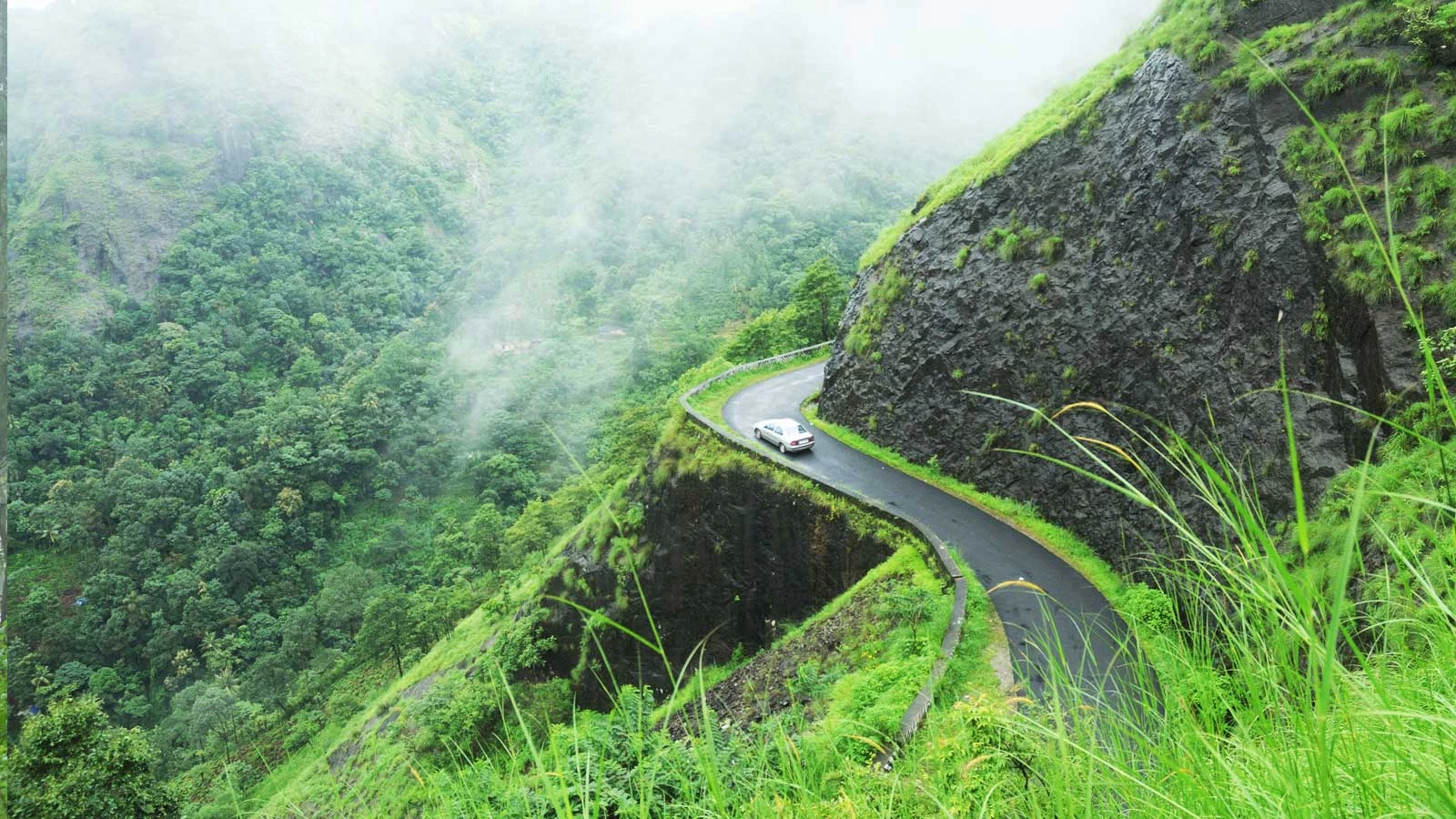
Climate in India
The most influential feature of the Subcontinent’s climate is the wet season, or monsoon. This breaks on the Keralan coast at the end of May, and works its way northeast across the country over the following month and a half. During the monsoon, regular and prolonged downpours are interspersed with bursts of hot sunshine, and the pervasive humidity can be intense.
At the height of the monsoon – especially in the jungle regions of the northwest and the low-lying delta lands of Bengal – flooding can severely disrupt communications, causing widespread destruction. In the Himalayan foothills, landslides are common, and entire valley systems can be cut off for weeks.
When is the best time to visit India?
The best time to visit most of India is during the cool, dry season, between November and March. Delhi, Agra, Varanasi, Rajasthan and Madhya Pradesh are ideal at this time of year, and temperatures in Goa and central India remain comfortable.
The heat of the south is never less than intense but it becomes stifling in May and June. Aim to be in Tamil Nadu and Kerala between January and March.
However, from March onwards, the Himalayas grow more accessible for hikers. The trekking season reaches its peak in August and September while the rest of the Subcontinent is being soaked by the rains.
By September, the monsoon has largely receded from the north, but it takes another couple of months before the clouds disappear altogether from the far south. The east coast of Andhra Pradesh and Tamil Nadu, and the south of Kerala, get a second drenching between October and December, when the “northwest” or “retreating” monsoon sweeps in from the Bay of Bengal. By December, however, most of the Subcontinent enjoys clear skies and relatively cool temperatures.
Visiting India in winter
Mid-winter sees the most marked contrasts between the climates of north and south India. While Delhi, for example, may be ravaged by chill winds blowing off the snowfields of the Himalayas, the Tamil plains and coastal Kerala, more than 1000km south, still stew under fierce post-monsoon sunshine.
Visiting India in December to February
The months of November, December and January are peak tourist season for the beach towns of Goa. At this time the coastal areas are blessed with dry weather and balmy temperatures post monsoon. This is also the season when most of Goa’s famous club nights and parties take place.
Over Christmas and New Year, Goa is overwhelmed by domestic tourists as well as international visitors. If you plan to travel here in December and January, we recommend booking your transport and accommodation well in advance.
Meanwhile, over in Delhi, the winter months are some of the worst for the city’s air pollution levels. It is in winter when Delhi experiences the worst of its smog.
Visiting India in Spring
As spring gathers pace, the centre of the Subcontinent starts to heat up again, and by late March thermometers nudge 33°C across most of the Gangetic Plains and Deccan plateau.
Visiting India in March to May
Holi, the festival of colours, takes place in March. If you’re lucky enough to be in India during Holi festival in March, you will experience an amazing atmosphere of fun, celebration and bright colours.
March is also considered the best time of year to visit the wildlife parks of central India, such as Ranthambore and Kanha.
Temperatures in the northern parts of the country, reach soaring heights of 36°C to 40°C, particularly in Delhi
On the coast, places like Goa and Kerala get a heavy rainfall and intense humidity during the month of May.
Temperatures peak in May and early June, when anyone who can retreats to the hill stations. Above the baking Subcontinental land mass, hot air builds up and sucks in humidity from the southwest, causing the onset of the monsoon in late June, and bringing relief to millions of overheated Indians.
Visiting India in summer
Summer marks the start of the monsoon season for most parts of the country. Heavy rainfall will soak most of the country during the summer months, making it humid and difficult to get around, particularly in rural areas.
Most domestic and international tourists escape to the Indian countryside and visit the hill stations, in Leh and Ladakh. If you do visit India during the monsoon season, you should pack pack waterproof clothing and sturdy shoes.
Visiting India in June to August
Avoid the coastal areas of the country during the summer months, as conditions are poor and most of the Goan beach resorts close down. Instead, head inland to the countryside of Tamil Nadu and Goa and visit some of India’s hill stations.
In the north of India, July and August are great months to visit the hill stations of Ladakh. Rajasthan also manages to escape the humidity and rainfall of the monsoon, more than other areas. Prices also drop outside of the peak tourist season, so this is a good time to grab a bargain.
Visiting India in Autumn
The autumn months are relatively comfortable for those visiting India. Once the rains have died down, visitors start returning to India’s main attractions.
Visiting India in September to November
October and November are suitable times to visit Delhi and the Golden Triangle, as there are more bearable temperatures, similar to in February and March.
However, during October and November, you may encounter a lot more tourists at the popular sites and landmarks. Crowds can become a nuisance for places like the Red Fort or the Taj Mahal. Both domestic and international tourists visit the capital at this time.
September and October are good months to visit Kerala, as it has a more comfortable climate, with less humidity, a cool wind and breeze.
Diwali, one of India’s biggest festivals, takes place at this time of year. The festival of lights, usually begins in October or at the beginning of November.
Travel FAQs
Essential Information
Cultural differences extend to all sorts of little things. While allowances will usually be made for foreigners, visitors unacquainted with Indian customs may need a little preparation to avoid causing offence or making fools of themselves. The list of dos and don’ts here is hardly exhaustive: when in doubt, watch what the Indian people around you are doing. Eating and the right-hand rule The biggest minefield of potential faux pas has to do with eating. This is usually done with the fingers, and requires practice to get absolutely right. Rule one is: eat with your right hand only. In India, as right across Asia, the left hand is for wiping your bottom, cleaning your feet and other unsavoury functions (you also put on and take off your shoes with your left hand), while the right hand is for eating, shaking hands and so on. Quite how rigid individuals are about this tends to vary, with brahmins (who, at the top of the hierarchical ladder, are one of the two “right-handed castes”) and southerners likely to be the strictest. While you can hold a cup or utensil in your left hand, and you can get away with using it to help tear your chapatti, you should not eat, pass food or wipe your mouth with your left hand. This rule extends beyond food. In general, do not pass anything to anyone with your left hand, or point at anyone with it either; and Indians won’t be impressed if you put it in your mouth. In general, you should accept things given to you with your right hand – though using both hands is a sign of respect. The other rule to beware of when eating or drinking is that your lips should not touch other people’s food – jhutha, or sullied food, is strictly taboo. Don’t, for example, take a bite out of a chapatti and pass it on. When drinking out of a cup or bottle to be shared with others, don’t let it touch your lips, but rather pour it directly into your mouth. This custom also protects you from things like hepatitis. It is customary to wash your hands before and after eating. Temples and religion Religion is taken very seriously in India; it’s important always to show due respect to religious buildings, shrines, images, and people at prayer. When entering a temple or mosque, remove your shoes and leave them at the door (socks are acceptable and protect your feet from burning-hot stone ground). Some temples – Jain ones in particular – do not allow you to enter wearing or carrying leather articles, and forbid entry to menstruating women. In the southern state of Kerala, most Hindu temples are closed to non-Hindus, but those that aren’t require men to remove their shirts before entering (women must wear long dresses or skirts). In a mosque, non-Muslims would not normally be allowed in at prayer time and women are sometimes not let in at all. In a Hindu temple, you are often not allowed into the inner sanctum; and at a Buddhist stupa or monument, you should always walk round clockwise (ie, with the stupa on your right). Hindus are very superstitious about taking photographs of images of deities and inside temples; if in doubt, desist. Funeral processions are private affairs, and should be left in peace. In Hindu funerals, the body is normally carried to the cremation site within hours of death by white-shrouded relatives (white is the colour of mourning). The eldest son is expected to shave his head and wear white following the death of a parent. At Varanasi and other places, you may see cremations; such occasions should be treated with respect and photographs should not be taken. Dress Indian people are very conservative about dress. Women are expected to dress modestly, with legs and shoulders covered. Trousers are acceptable, but shorts and short skirts are offensive to many. Men should always wear a shirt in public, and avoid skimpy shorts away from beach areas. These rules are particularly important in temples and mosques. Cover your head with a cap or cloth when entering a dargah (Sufi shrine) or Sikh gurudwara; women in particular are also required to cover their limbs. Men are similarly expected to dress appropriately with their legs and head covered. Caps are usually available on loan, often free, for visitors, and sometimes cloth is available to cover up your arms and legs. Never mind sky-clad Jains or Naga Sadhus, nudity is not acceptable in India. Topless bathing is not uncommon in Goa (though it is in theory prohibited), but you can be sure the locals don’t like it. In general, Indians find it hard to understand why rich Westerners should wander round in ragged clothes or imitate the lowest ranks of Indian society, who would love to have something more decent to wear. Staying well groomed and dressing “respectably” vastly improves the impression you make on local people and reduces sexual harassment for women, too. Other possible gaffes Kissing and embracing are regarded in India as part of sex: do not do them in public. In more conservative areas (ie outside Westernized parts of big cities or tourist enclaves), it is still rare for couples to hold hands, though Indian men can sometimes be seen holding hands as a sign of “brotherliness”. Be aware of your feet. When entering a private home, you should normally remove your shoes (follow your host’s example); when sitting, avoid pointing the soles of your feet at anyone. Accidental contact with one’s foot is always followed by an apology. Indian English can be very formal and even ceremonious. Indian people may well call you “sir” or “madam”, even “good lady” or “kind sir”. At the same time, you should be aware that your English may seem rude to them. In particular, swearing is taken rather seriously, and casual use of the f-word is likely to shock. What you should expect when traveling? Because of its sheer size, there are many different ways of seeing India. Covering vast distances can be a challenge for those short on time, so it is worth researching different India travel itineraries and picking one that suits you. India, being a place of diverse culture and landscapes, is a complex country to fit in your travels with one trip. When planning a trip to India, it is important to create a checklist of exactly what you want to see to ensure you do not miss your main spots of interest. Travel safety in India Travel in India is, generally speaking, safe for visitors. As expected anywhere, a tourist may be more susceptible to petty thefts and scams, but common sense and a few precautions go a long way. Crowded places – including public transport – is first and foremost where you should keep your awareness sharp, as this is where pickpockets are most likely to operate. When staying in dorm rooms, make sure to lock up your luggage with a padlock, and keep an eye on any of your luggage you store on top of a bus and ensure it’s well secured. If you go swimming, do not leave your belongings unattended. It’s also worth mentioning that not all crimes are committed by humans: monkeys in India have been known to steal belongings not only on the street but even from hotel rooms with open windows or straight from your shoulder. Always remember that destinations and routes popular with tourists are also popular with thieves. Although it’s not common, refuse food and drink from strangers and fellow passengers, as it can be an attempt to drug and steal, too. In saying this, you shouldn’t be paranoid when travelling in India; crime rates are below many western countries and staying relaxed is the best way to experience the country. As with anywhere, just keep your wits about you.
Getting There
Most travelers visiting India fly into the country and it’s not difficult to find good flights: there are multiple direct services from the UK, a few from the US and Canada, and two from Australia. There are many airlines that fly to India, and these flights usually arrive into Delhi or Mumbai. From the UK you can also reach Chennai, Hyderabad and Bengaluru without any stops. As with any destination, fares vary with the seasons. For travel in India fares are highest from November to March, typically when it’s the best time to visit most of the country. The shoulder seasons of April to May and August to early October are cheaper, and you’ll get the best flight deals during the low season of June and July. Bear in mind that air fares are higher during India’s main festivals and events, such as Diwali in October/November time. For more detail, visit our page on getting to India.
Getting Around
Intercity transport in India may not be the fastest or the most comfortable in the world, but it’s cheap and goes more or less everywhere. You generally have the option of train or bus, sometimes plane, and occasionally even boat. Transport around town comes in even more permutations, ranging in Kolkata, for example, from human-pulled rickshaws to a state-of-the-art metro system. Whether you’re on road or rail, public transport or your own vehicle, India offers the chance to try out some classics: narrow-gauge railways, steam locomotives, the Ambassador car and the Enfield Bullet motorbike – indeed some people come to India for these alone. BY TRAIN Travelling by train is one of India’s classic experiences. The national rail network covers almost the entire country; only a few places (such as the mountainous regions of Sikkim, Ladakh, Uttarakhand and most of Himachal Pradesh) are inaccessible by train. Although the railway system might look like chaos, it does work, and generally better than you might expect. Trains are often late, of course, sometimes by hours rather than minutes, but they do run, and when the train you’ve been waiting for rolls into the station, the reservation you made halfway across the country several weeks ago will be on a list pasted to the side of your carriage. It’s worth bearing in mind, with journeys frequently lasting twelve hours or more, that an overnight train can save you a day’s travelling and a night’s hotel bill, assuming you sleep well on trains. When travelling overnight, always padlock your bag to your bunk; an attached chain is usually provided beneath the seat of the lower bunk. Types of train There are three basic types of passenger train in India. You’re most likely to use long-distance inter-city trains (called “express” or “mail”) along with the speedier “super-fast” air-conditioned trains – these include the long-established Rajdhani expresses, which link Delhi with cities nationwide, and Shatabdi expresses, daytime trains that connect major cities, mostly within an eight-hour travelling distance, plus the newer and faster still Duronto expresses, which also link major metropolitan areas and have fewer stops. There are also painfully slow local “passenger” trains, which stop everywhere, and which you’ll only use if you want to get right off the beaten track. In addition to these three basic types of train, there are also a few dedicated tourist trains and other special services, such as the famous Palace on Wheels and the toy train to Darjeeling. Classes of train travel Indian Railways distinguishes between no fewer than eight classes of travel. Different types of train carry different classes of carriage, though you’ll seldom have more than four to choose from any one service. The simplest and cheapest class, used by the majority of Indians, is second class (II or “second seating”), which are mostly unreserved. These basic carriages have hard wooden seats and often become incredibly packed during the day – bearable for shortish daytime journeys, but best avoided for longer trips and (especially) overnight travel, unless you’re exceptionally hardy or unusually poor. On the plus side, fares in second-class unreserved are so cheap as to be virtually free. It also represents a way of getting on a train at the last minute if you haven’t been able to secure a reserved seat. Far more civilized, and only around fifty percent more expensive, is regular sleeper class (SL), consisting of carriages of three-tiered padded bunks that convert to seats during the day. All seats in these carriages must be booked in advance even for daytime journeys, meaning that they don’t get horrendously overcrowded like second-class unreserved, although there’s usually still plenty going on, with itinerant chai- and coffee-sellers, travelling musicians, beggars and sweepers passing through the carriages. Overnight trips in second-class sleeper compartments are reasonably comfy. First class (FC) consists of non-a/c seating in comfortable if ageing compartments of two to four berths, though this class is being phased out and is now seldom found. The other five classes are all air-conditioned (available only on inter-city and super-fast trains). A/c chair class (CC) cars are found almost exclusively on super-fast services and consist of comfortable reclining seats; they’re really designed for daytime travel, since they don’t convert to bunks, and aren’t generally found on overnight services. Shatabdi expresses are made up entirely of chair-car carriages – ordinary a/c chair car and, for double the price, an Executive a/c chair class (EC) car. There are three classes of air-conditioned sleepers. The cheapest, a/c 3-tier (AC3 or 3A), has open carriages with three-tier bunks – basically the same as second-class sleeper, except with a/c and bedding. Less crowded (and found on more services) is a/c 2-tier (AC2 or 2A), which has two-tier berths. Most comfortable of all is a/c first-class (AC1 or 1A), which consists of two-tier bunks in two- or four-person private compartments, complete with carpeting and relatively presentable bathrooms – although fares can work out more expensive than taking a plane. Note that bed linen is provided free on most a/c services, while bottled water, snacks and simple meals are included in the ticket price of Rajdhani, Shatabdi and Duronto services. Ladies’ compartments now only exist on suburban trains in big cities, though the number of families travelling means that single women are at least unlikely to end up in a compartment with only men. You can always ask the ticket inspector to change your seat if you feel uncomfortable. Some stations also have ladies-only waiting rooms. Timetables and fares Fares, timetables and availability of berths can be checked online at Indian Railways’ cumbersome website (indianrail.gov.in), or via the more streamlined, privately run cleartrip.com. Indian Railways’ Trains at a Glance (₹50; updated twice a year) contains timetables of all inter-city and super-fast trains and is available from information counters and newsstands at all main stations. All rail fares are calculated according to the exact distance travelled. Trains at a Glance prints a chart of fares by kilometres, and also gives the distance in kilometres of stations along each route in the timetables, making it possible to calculate what the basic fare will be for any given journey. By way of comparison, the cost for each class of travel for a ticket from New Delhi to Mumbai is as follows: AC1 ₹4135; AC2 ₹2410; AC3 ₹1660; CC ₹875; SL ₹630; and II ₹370. Indrail passes Indrail passes, sold to foreigners and Indians resident abroad, cover all fares and reservation fees for periods ranging from half a day to ninety days, but are considerably more expensive than buying tickets individually. The pass is designed for nationwide travel, so if you only use it, say, between Delhi, Agra and the cities of Rajasthan, you won’t be getting your money’s worth. It does, however, save you queuing for tickets, allow you to make and cancel reservations without charge and generally smooths your way in. For example, if you need to find a seat or berth on a “full” train, pass-holders get priority for tourist quota places. Indrail passes are available, in sterling or US dollars, at main station tourist counters in India and outside the country at IR agents and sometimes at Air India offices. A seven-day pass costs US$80 in SL or II, US$135 in FC, AC2/AC3 and CC, and US$270 in AC1. There’s a full list of prices and overseas IR agents at indianrail.gov.in/international_Tourist.html. Reserving tickets It’s important to plan your train journeys in advance, as demand often makes it impossible to buy a long-distance ticket on the same day that you want to travel – although the Tatkal quota system has made life a little easier. Travellers following tight itineraries tend to buy their departure tickets from particular towns the moment they arrive to avoid having to trek out to the station again. At most large stations, it’s possible to reserve tickets for journeys starting elsewhere in the country. Online booking is best done via the privately run cleartrip.com, which accepts foreign Visa cards and MasterCards (with a 1.8 percent fee, plus an additional ₹20 booking charge); you will first have to register with them and Indian Railways (irctc.co.in) – check out seat61.com/India.htm#book-fromoutside for a clear explanation of this convoluted procedure. Bookings may be made from 120 days in advance right up to four hours before the scheduled departure time of the train. Cleartrip.com also handles Tatkal tickets (see below). Having booked your travel, you can then print out your own e-tickets, taking this along with some photo ID, such as a passport, when you board the train. A viable alternative to Cleartrip.com is makemytrip.com, which also accepts some foreign credit cards. When reserving a ticket in person at a railway station, the first thing you’ll have to do is fill in a little form at the booking office stating your name, age and sex, your proposed date of travel, and the train you wish to catch (giving the train’s name and number). Most stations have computerized booking counters and you’ll be told immediately whether or not seats are available. Reservation offices in the main stations are generally open from Monday to Saturday from 8am to 8pm, and on Sunday to 2pm. In larger cities, major stations have special tourist sections to cut queues for foreigners, with helpful English-speaking staff. Elsewhere, buying a ticket can often involve a longish wait, though women often have dedicated queues or can try simply walking to the head of the queue and forming their own “ladies’ queue”. A few stations also operate a number system of queueing, allowing you to repair to the chai stall until your number is called. A good alternative to queueing yourself is to get someone else to buy your ticket for you. Many travel agents will do this for a small fee (typically around Rs50–100); alternatively, ask at your guesthouse if they can sort it out. Quotas and late-availability tickets If there are no places available on the train you want, you have a number of choices. First, some seats and berths are set aside as a “tourist quota” – ask at the tourist counter of the reservations hall if you can get in on this, or else try the stationmaster. This quota is available in advance but usually only at major or originating stations. Failing that, other special quotas, such as one for “emergencies”, only released on the day of travel, may remain unused – however, if you get a booking on the emergency quota and a pukka emergency or VIP turns up, you lose the reservation. Alternatively, you can stump up extra cash for a Tatkal ticket, which guarantees you access to a special ten percent quota on most trains, though certain catches and conditions apply. Bookable online and at any computerized office, these are released from 10am the day before the train departs, and there’s a surcharge of Rs75–300, depending on the class of travel. RAC – or “Reservation Against Cancellation” – tickets are another option, giving you priority if sleepers do become available. The ticket clerk should be able to tell you your chances. With an RAC ticket you are allowed onto the train and can sit until the conductor can find you a berth. The worst sort of ticket to have is a wait-listed one – identifiable by the letter “W” prefixing your passenger number – which will allow you onto the train (though not Shatabdi, Rajdhani or Duronto trains) but not in a reserved compartment; in this case go and see the ticket inspector (TTI) as soon as possible to persuade him to find you a place if one is free. For short journeys or on minor routes you won’t need to reserve tickets in advance. Luxury tourist trains Inspired by the Orient Express, Indian Railways offers high-end holiday packages aboard luxury tourist trains. The flagship of the scheme is the Palace on Wheels, with sumptuous ex-maharajas’ carriages updated into modern air-conditioned coaches, still decorated with the original designs. An all-inclusive, eight-day whistle-stop tour (Sept–April weekly) starts at US$2882 per person for the full trip, with the cheapest rates off-season (Sept and April). Note that the train is often booked up for months ahead, so early reservations are advised. The Palace on Wheels has proved so popular that it has spawned a number of similar heritage trains, including Royal Rajasthan on Wheels and Maharajas’ Express. Details of all these tours, including fares, can be found on the Palace on Wheels website. BY PLANE Considering the huge distances involved in getting around the country, and the time it takes to get from A to B, flying is an attractive option, despite the cost – the journey from Delhi to Chennai, for example, takes a mere 2 hours 30 minutes by plane compared to 36 hours on the train. Delays and cancellations can whittle away the time advantage, especially over small distances, but if you’re short of time and plan to cover a lot of ground, flying can be a godsend. There was a proliferation of private airlines in the early years of the millennium and after a few failures, most notably Kingfisher Airlines, a further crop has popped up in recent years. Booking flights is most easily done online via the airline’s website. Larger carriers also have offices in major cities. Children under twelve pay half fare and under-twos (one per adult) pay ten percent. Domestic airlines Air India Air India Express Air Pegasus FLYeasy Go Air IndiGo Airlines Jet Airways/JetKonnect. SpiceJet Vistara
Visa and Permits
Most tourists require a visa in order to travel to India. Luckily, over the years the process for getting a standard tourist visa has been streamlined. Nowadays, online applications are the main way to obtain a visa for a shorter visit. For people who plan to study or work in India, it’s necessary to apply for a special visa. As mentioned, online visa applications are the most common and efficient way to gain entry into India, and this produces an e-Tourist visa. Citizens of the UK, Ireland, US, Canada Australia, New Zealand, South Africa, and many more countries are eligible for an e-Tourist visa through the Indian government’s official online portal. They’re valid for one year from the date of issue for a stay of 90 days during each visit (multiple visits are allowed). Just make sure you secure it at least four days – and no more than 30 – before you travel. For the application, you’ll need your travel details, a photo of yourself to upload and pay the online fee. Make sure you print out the eTV and take it with you to India; upon showing this, you’ll be issued your visa on arrival. If you own a passport from a country not included on the eTV list, you’ll need to apply for a standard tourist visa. Like the eTV, it’s valid for one year from the date of issue, but you can stay for up to 180 days on one visit. Fees vary greatly across nationalities and you’ll need to check on the respective website.
Local Customs
Because a caste system existed in India for many centuries, people continue to be highly aware of social hierarchy and their place within it. Age, academic degree and profession all help to determine status; so does caste, to this day. First greet the oldest or most senior individual in a group. Those with titles should be addressed using their titles. Use “Sir” or “Madam” for those without professional titles. Don’t call people by their first names unless invited to do so, especially when addressing older Indians. Physical Contact Compared to Westerners, Indians are not given to much physical contact; they are a much more reserved society. Men might exchange handshakes with each other, and women might shake hands with each other, but a man and a woman will rarely shake each other’s hand. Refrain from public displays of affection and do not touch anyone’s head. Both are considered improper. Avoid even casually touching people. Be Patient When speaking, Indians do not express themselves as directly as Westerners. They will politely make small-talks, say things you want to hear and avoid making quick decisions. They are very conscious of following protocol, so major decisions are made at higher levels. Be prepared for delays and vague replies. Do not show frustration or lose your temper; Indians are non-confrontational. You are more likely to get what you want by being courteous, patient and persistent. Table Manners Don’t seat yourself. Wait for someone to tell you where to sit. It is customary to decline the first offer of any refreshments. You may accept later when the offer is repeated. At a formal meal, the guest of honor is usually served first, then the men and children. Traditionally, the women will serve the men and eat later. Indians eat using the right hand. Leaving a little food on your plate means you have eaten your fill. An empty plate means you are still hungry.
Events and Festivals
Virtually every temple in every town or village across the country has its own festival. The biggest and most spectacular include Puri’s Rath Yatra festival in June or July, the Hemis festival in Ladakh, also held in June or July, Pushkar’s camel fair in November, Kullu’s Dussehra, Madurai’s three annual festivals and, of course, the Kumbh Mela, held in turn at Allahabad, Haridwar, Nasik and Ujjain. While mostly religious in nature, merrymaking rather than solemnity is generally the order of the day, and onlookers are invariably welcome. Indeed, if you’re lucky enough to coincide with a local festival, it may well prove to be the highlight of your trip. The calendar below includes details of the main national and regional celebrations. Hindu, Sikh, Buddhist and Jain festivals follow the Indian lunar calendar and their dates therefore vary from year to year – we’ve given the lunar month (Magha, Phalguna, Chaitra, and so on), where relevant. The lunar calendar adds a leap month every two or three years to keep it in line with the seasons. Muslim festivals follow the Islamic calendar, whose year is shorter and which thus loses about eleven days per annum against the Gregorian. In recent years, there has been an explosion in the number of contemporary, pop and fusion music festivals, as India develops a circuit something like the UK and other parts of Europe. Examples include Festa de Diu, Ragasthan, Jodhpur RIFF and Magnetic Fields. You may, while in India, be lucky enough to be invited to a wedding. These are jubilant affairs, always scheduled on auspicious days. A Hindu bride dresses in red for the ceremony, and marks the parting of her hair with red sindur and her forehead with a bindi. She wears gold or bone bangles, which she keeps on for the rest of her married life. Although the practice is officially illegal, large dowries often change hands. These are usually paid by the bride’s family to the groom, and can be contentious; poor families feel obliged to save for years to get their daughters married. Principal Indian holidays India has only four national public holidays as such: Jan 26 (Republic Day); Aug 15 (Independence Day); Oct 2 (Gandhi’s birthday); and Dec 25 (Christmas Day). Each state, however, has its own calendar of public holidays; you can expect most businesses to close on the major holidays of their own religion. The Hindu lunar calendar months are given in brackets here. Key: B=Buddhist; C=Christian; H=Hindu; J=Jain; M=Muslim; N=non-religious; P=Parsi; S=Sikh. Jan–Feb (Magha–Phalguna) Non-religious Hampi Utsav: Government-sponsored music and dance festival. International Kite Festival/Uttarayan (Jan 14). Coinciding with Makar Sankranti, Ahmedabad (Gujarat) hosts the most spectacular of all of India’s kite festivals. Republic Day (Jan 26): A military parade in Delhi typifies this state celebration of India’s republic-hood, followed on Jan 29 by the “Beating the Retreat” ceremony outside the presidential palace in Delhi. Elephanta Music and Dance Festival. Classical Indian dance performed with the famous rock-cut caves in Mumbai harbour as a backdrop. Hindu Pongal (1 Magha): Tamil harvest festival celebrated with decorated cows, processions and rangolis (chalk designs on the doorsteps of houses). Pongal is a sweet porridge made from newly harvested rice and eaten by all, including the cows. The festival is also known as Makar Sankranti, and celebrated in Karnataka, Andhra Pradesh and the east of India. Sagar Mela: Pilgrims come from all over the country to Sagardwip, on the mouth of the Hooghly 150km south of Kolkata, to bathe during Makar Sankranti. Vasant Panchami (5 Magha): One-day spring festival in honour of Saraswati, the goddess of learning, celebrated with kite-flying, the wearing of yellow saris and the blessing of schoolchildren’s books and pens by the goddess. Teppa Floating Festival (16 Magha). Meenakshi and Shiva are towed around the Vandiyur Mariamman Teppakulam tank in boats lit with fairy lights – a prelude to the Tamil marriage season in Madurai, Tamil Nadu. Feb–March (Phalguna) Buddhist Losar (1 Phalguna): Tibetan New Year celebrations among Tibetan and Himalayan Buddhist communities, especially at Dharamsala (HP). Hindu Shivratri (10 Phalguna): Anniversary of Shiva’s tandav (creation) dance, and his wedding anniversary. Popular family festival but also a sadhu festival of pilgrimage and fasting, especially at important Shiva temples. Holi (15 Phalguna): Water festival held during Dol Purnima (full moon) to celebrate the beginning of spring, most popular in the north. Expect to be bombarded with water, paint, coloured powder and other mixtures; they can permanently stain clothing, so don’t go out in your Sunday best. Non-religious Khajuraho Festival of Dance: The country’s finest dancers perform in front of Madhya Pradesh’s famous erotic sculpture-carved shrines. Goa Carnival: Goa’s own Mardi Gras features float processions and feni-induced mayhem in the state capital, Panjim. March–April (Chaitra) Hindu Gangaur (3 Chaitra): Rajasthani festival (also celebrated in Bengal and Odisha) in honour of Gauri (Parvati), marked with singing and dancing. Ramanavami (9 Chaitra): Birthday of Rama, the hero of the Ramayana, celebrated with readings of the epic and discourses on Rama’s life and teachings. Christian Easter (moveable feast): Celebration of the resurrection of Christ. Good Friday in particular is a day of festivity. Parsi Pateti:Parsi new year, also known as Nav Roz, celebrating the creation of fire. Feasting, services and present-giving. Khorvad Sal (a week after Pateti): Birthday of Zarathustra (aka Zoroaster). Celebrated in the Parsis’ fire temples, and with feasting at home. April–May (Vaisakha) Hindu Baisakhi (1 Vaisakha): To the Hindus, it’s the solar new year, celebrated with music and dancing Chithirai: Lively procession at Madurai in Tamil Nadu. See p.1016. Puram: Frenzied drumming and elephant parades in Thrissur, Kerala. Sikh Baisakhi (1 Vaisakha): it’s the anniversary of the foundation of the Khalsa (Sikh brotherhood) by Guru Gobind Singh. Processions and feasting follow readings of the Granth Sahib scriptures. Jain Mahavir Jayanti (13 Vaisakha):Birthday of Mahavira, the founder of Jainism. The main Jain festival of the year, observed by visits to sacred Jain sites, especially in Rajasthan and Gujarat, and with present-giving. Buddhist Buddha Jayanti (16 Vaisakha): Buddha’s birthday. He achieved enlightenment and nirvana on the same date. Sarnath (UP) and Bodh Gaya (Bihar) are the main centres of celebration. May–June (Jyaishtha) Hindu Ganga Dussehra (10 Jyaishtha): Bathing festival to celebrate the descent to earth of the goddess of the Ganges. June–July (Ashadha) Hindu Rath Yatra (2 Ashadha): Festival held in Puri (and other places, especially in the south) to commemorate Krishna’s (Lord Jagannath’s) journey to Mathura. Teej (3 Ashadha): Festival in honour of Parvati to welcome the monsoon. Particularly celebrated in Rajasthan. Buddhist Hemis Tsechu Held sometime between late June and mid-July, this spectacular Ladakh festival features chaam (lama dances) to signify the victory of Buddhism over evil. July–Aug (Shravana) Hindu Naag Panchami (3 Shravana): Snake festival in honour of the naga snake deities. Mainly celebrated in Rajasthan and Maharashtra. Raksha Bandhan/Narial Purnima (16 Shravana): Festival to honour the sea god Varuna. Brothers and sisters exchange gifts, the sister tying a thread known as a rakhi to her brother’s wrist. Brahmins, after a day’s fasting, change the sacred thread they wear. Non-religious Independence Day (Aug 15): India’s biggest secular celebration, on the anniversary of Independence from the UK. Aug–Sept (Bhadraparda) Hindu Ganesh Chaturthi (4 Bhadraparda): Festival dedicated to Ganesh, especially celebrated in Maharashtra. In Mumbai, huge processions carry images of the god to immerse in the sea. Onam: Keralan harvest festival, celebrated with snake-boat races. The Nehru Trophy Snake Boat Race at Alappuzha (held on the 2nd Sat of Aug) is the most spectacular, with long boats crewed by 150 rowers. Janmashtami (23 Bhadraparda): Krishna’s birthday, an occasion for fasting and celebration, especially in Agra, Mathura and Vrindavan (UP). Sept–Oct (Ashvina) Hindu Dussehra/Dasara (1–10 Ashvina): Ten-day festival (usually two days’ public holiday) associated with vanquishing demons, in particular Rama’s victory over Ravana in the Ramayana, and Durga’s over the buffalo-headed Mahishasura (particularly in West Bengal, where it is called Durga Puja). Dussehra (known as Dasara in south India) celebrations include performances of the Ram Lila (life of Rama). Best in Mysuru (Karnataka), Ahmedabad (Gujarat) and Kullu (Himachal Pradesh). Durga Puja is best seen in Kolkata where it is an occasion for exchanging gifts, and every locality has its own competing street-side image. Non-religious Mahatma Gandhi’s Birthday (Oct 2): Solemn commemoration of independent India’s founding father. Oct–Nov (Kartika) Hindu Diwali (Deepavali) (15 Kartika): Festival of lights, and India’s biggest, to celebrate Rama’s and Sita’s homecoming in the Ramayana. Festivities include the lighting of oil lamps and firecrackers, and the giving and receiving of sweets and gifts. Diwali coincides with Kali Puja, celebrated in temples dedicated to the wrathful goddess, especially in Bengal, and often accompanied by the ritual sacrifice of goats. Jain Jain New Year (15 Kartika): Coincides with Diwali, so Jains celebrate alongside Hindus. Sihk Nanak Jayanti (16 Kartika): Guru Nanak’s birthday marked by prayer readings and processions, especially in Amritsar and in the rest of the Punjab, and at Patna (Bihar). Nov–Dec (Margashirsha or Agrahayana) Hindu Sonepur Mela: World’s largest cattle fair at Sonepur (Bihar). Non-religious Pushkar Camel Fair: Camel herders don their finest attire for this massive livestock market on the fringes of the Thar Desert in Rajasthan. Dec–Jan (Pausa) Non-religious Poush Mela (Dec 22–25): Held in Shantiniketan near Kolkata, this festival is renowned for its musical performances by Bauls (mystic minstrels). Christian Christmas (Dec 25): Popular in Christian areas of Goa and Kerala, and in big cities. Moveable H Kumbh Mela: Major festival held at four holy cities in rotation, with each location hosting once every twelve years: Allahabad (UP), Nasik (Maharashtra), Ujjain (MP) or Haridwar (Uttarakhand). The Allahabad event is the most important and drew 120 million people in 2013; there are also Ardh (half) Kumbh Melas in between, the next at Allahabad in 2019. M Ramadan: The month during which Muslims may not eat, drink or smoke from sunrise to sunset, and should abstain from sex. Muslim areas tend to come alive in the evenings as locals break their fast after prayers (iftar) and shop for Id. Estimated future dates are: May 27 to June 25, 2017, May 16 to June 14, 2018, and May 6 to June 4, 2019. M Id ul-Fitr: Feast to celebrate the end of Ramadan. The precise date of the festival depends on exactly when the new moon is sighted, and so cannot be predicted with complete accuracy. Estimated dates (though these may vary by a day or two) are: June 26, 2017, June 15, 2018, and June 5, 2019.
What's your refund policy ?
Below is our cancellation and refund policy: 🔸 60 days prior to arrival date: No cancellation charge for the land cost. We guarantee 100% of the land cost back. The airline cancellation fees are applied according to the airline's policy. 🔸 59 - 30 days prior to arrival date: 5% cancellation charge + airfare cancellation fees 🔸 29 - 15 days prior to arrival date: 10% + airfare cancellation fees. 🔸 14 - 8 days prior to arrival date: 40 + airfare cancellation fees. 🔸 7 days prior to arrival date: 100% 🔸 No show: 100% Please note that the domestic flight tickets in the package are non-refundable




